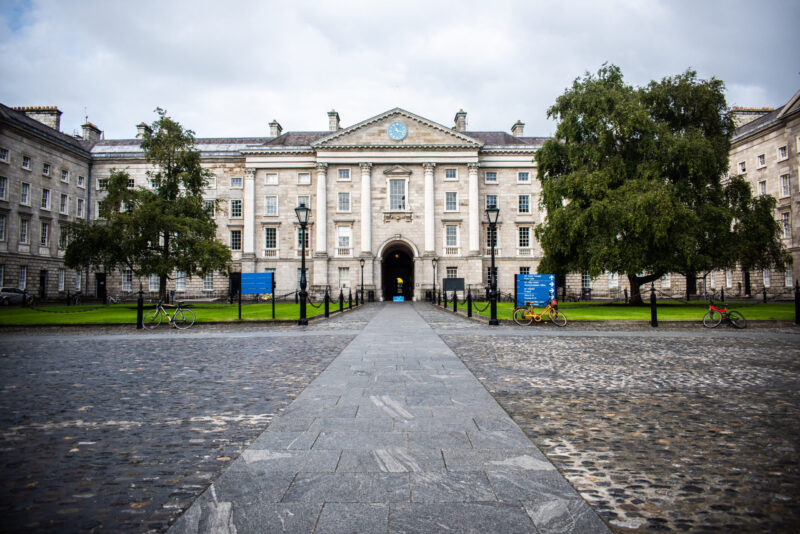So, the thing is … this time of year should feel like the start of something new.
Which is odd because, when you think about it, the leaves are starting to look like old burger wrappers, flowers are becoming withered and pointless and the natural world seems to be generally asking itself if it’s all worth the effort. There is a very good reason that most sensible tribes have their festivals of rebirth in the springtime. We in universities certainly are a curious and perverse lot.
However, starting the new academic year at this time is what we do. And so, once again, the front gates will be thrown open and, as they have done every year since 1592, swarms of fresh-faced freshers will come flooding in, ravenous for knowledge and drink, re-energising the old campus, injecting new life into sclerotic veins. If the university were a body, this would be its infusion of clean blood after a year’s hard partying. Come to think of it, we’re almost akin to the institutional equivalent of a pre-geriatric Keith Richards.
Except this year, it’s different. This time around, the freshers are missing for the start of term.
We all know the story at this point. It was not that the leaving certificate was delayed, but that the State Examinations Commission (SEC) needed more time to figure out the marks. This meant that the leaving certificate results (and hence CAO offers) only came out in September – more or less when the first injections of fresh freshers should have been kick-starting the heart of the old university and pumping up till receipts in the Pav.
To be fair, the Minister for Education, Norma Foley, has been asked about this, and she has what she seems to think is a perfectly reasonable explanation: she can’t tell the SEC what to do. This, of course, makes perfect sense. It’s like the owner of a restaurant not being able to tell the chef and the kitchen staff what to cook. You know, the sort of place named La Grenouille Bronzée that advertises French-Mediterranean cuisine, but where the kitchen staff refuse to cook anything other than spice bags. It happens all the time.
The trouble is, whenever there is any attempt to have a measured discussion about anything to do with the leaving certificate, all around the country there are folks who stand up, thump their chests with emotion and talk about it being a “rite of passage”. Again, there is an argument for this sort of thing. Rites of passage have been around for a long time, and who are we in a four-hundred-odd-year-old university to question tradition? Yet surely, in this multicultural age, the youth of Ireland ought to have their choice of rite of passage. What’s wrong with taking peyote in the desert or getting your face tattooed (all perfectly acceptable rites of passage elsewhere in the world)? Either is bound to be less painful or traumatic than the leaving certificate.
Unfortunately, once you start thinking about Ireland’s education system in these terms, the ability to take a rational view starts to drift away.
Take, for instance, the rationale for requiring nearly three months – longer than anywhere else in Europe by a good margin – to mark a set of exams. This is a case where the pandemic has had the effect of allowing us to see something that had been under our eyes all along, but was somehow hidden (a bit like cycle lanes).
Those who have been indoctrinated into the leaving certificate claim that as well as being a rite of passage, it is also transparent. Apparently, the system works something like this: a student writes the exam, which is parcelled off to a marker, who then marks it. Fine. But, then all of the marks for all of the papers have to be considered to see if the averages (medians? means?) are the same as previous years. If there is any variation (how much?), then some (all? which papers?) go back (somewhere?) and (someone?) “adjusts” the marks until the average for a given subject comes out the same (more or less?) at that of the previous year. All perfectly transparent. It’s one reason our education system is the envy of the world.
Even better is that every August (or, in this year, September), the SEC proudly unveils a set of statistics to show (cue fanfare) that the marks this year are consistent with those of last year. This means that as a set of statistics showing variations in what anyone has actually learned, they have about the same value as the data on North Korean agricultural output. Of course, such exemplary statistical consistency is time-consuming – hence the spookily empty front square this first week of term.
All of this transparency is conducted in a factory-sized facility outside Athlone, where the SEC is based. It looks like the sort of place that used to make those plastic cases for VHS video tapes or hubcaps for Ford Cortinas. I’ve had various reasons to visit it over the years, and my main impression was of a place that ran on industrial quantities of tea and digestive biscuits. God knows what they do in its echoing corridors between August and February, before they start getting ready for the next round of exams. The consumption of tea and bickies must be ferocious. Maybe they could send some our way, to tide us over until the new freshers finally arrive to re-energise us for another year.
Professor Chris Morash is Trinity’s Seamus Heaney Professor of Irish Writing and a former Vice-Provost. He returns this year to continue writing his column, known as “Thingmote”, following a very successful run last year. The Thingmote was a mound of earth which served as a meeting space in mediaeval Dublin. It was located just outside where the front gate is now.







